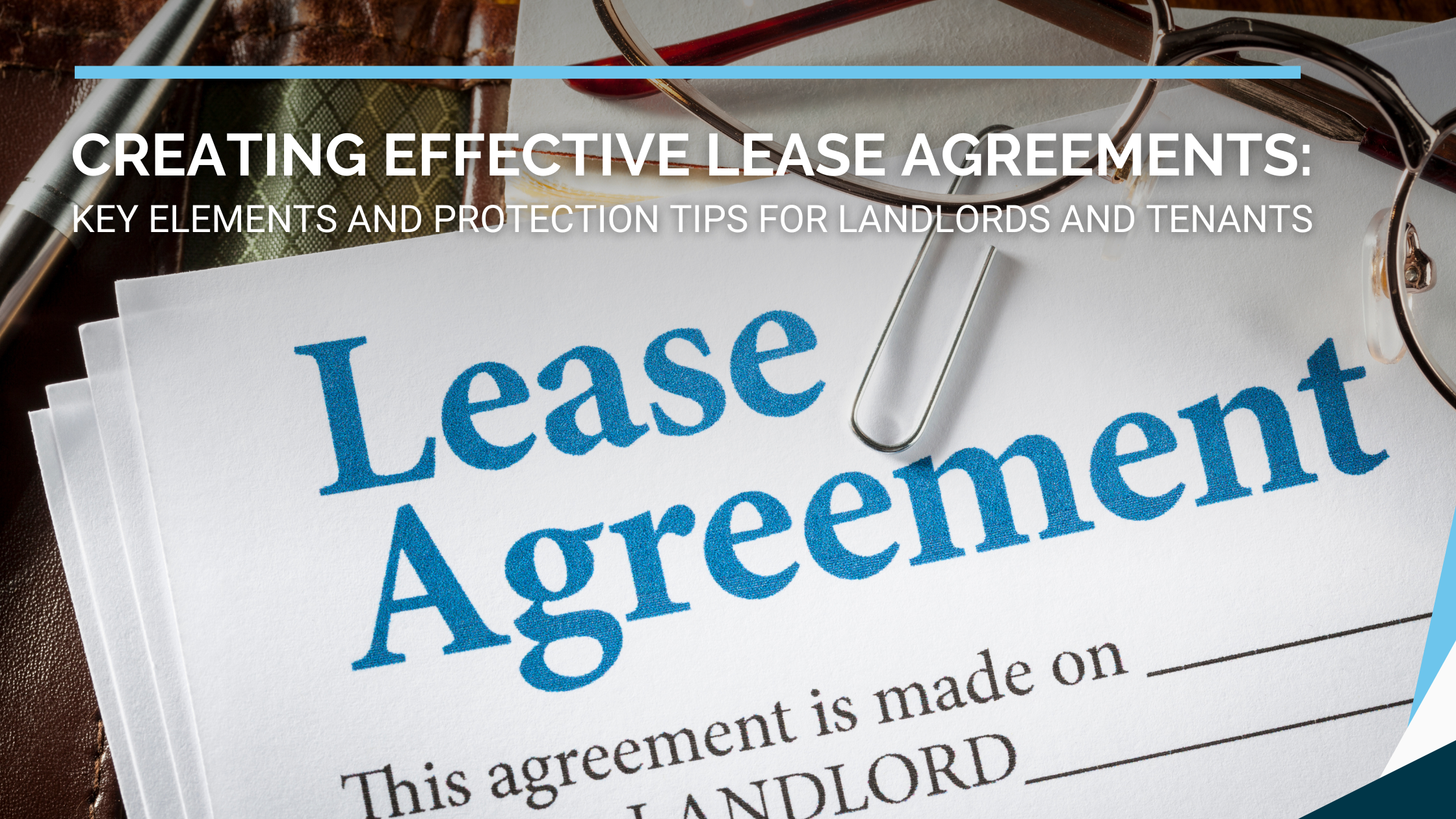A well-crafted lease agreement is the foundation of a successful landlord-tenant relationship. It sets clear expectations, outlines responsibilities, and provides legal protection for both parties. At Rosenbaum Realty Group, we understand the importance of comprehensive lease agreements in property management. Here, we’ll explore the key elements of an effective lease agreement and how to ensure it protects both landlords and tenants.
Key Elements of a Comprehensive Lease Agreement
Basic Information
Names and Contact Information: Include the full names and contact details of all tenants and the landlord or property manager.
Property Address: Clearly state the address of the rental property, including unit number if applicable.
Lease Term
Start and End Dates: Specify the lease start and end dates. If it’s a month-to-month agreement, include details about the renewal and termination process.
Lease Renewal: Outline the terms for lease renewal, including notice periods and any potential rent adjustments.
Rent Details
Rent Amount: Clearly state the monthly rent amount and the due date.
Payment Method: Specify acceptable payment methods (e.g., check, online transfer) and where payments should be sent.
Late Fees: Outline any late fees, including the amount and when they will be applied.
Security Deposit
Amount: Specify the security deposit amount and the conditions under which it will be returned.
Use and Return: Detail how the deposit will be used (e.g., for damages, unpaid rent) and the timeframe for its return after lease termination.
Utilities and Maintenance
Utilities: Clearly state which utilities (e.g., water, electricity, gas) are the tenant’s responsibility and which are covered by the landlord.
Maintenance Responsibilities: Outline the responsibilities for property maintenance, including who handles repairs and routine upkeep.
Rules and Regulations
Property Use: Include any rules regarding property use, such as noise restrictions, smoking policies, and guest limitations.
Pets: Specify the pet policy, including any pet fees or restrictions on certain breeds or sizes.
Entry Rights
Landlord Access: Detail the circumstances under which the landlord can enter the property, such as for inspections or repairs, and the required notice period.
Tenant Obligations
Conduct: Outline expectations for tenant behavior, including adherence to community rules and maintenance of the property.
Insurance: Specify whether tenants are required to have renters’ insurance.
Termination Clause
Early Termination: Provide details on how the lease can be terminated early by either party, including notice periods and any penalties or fees.
Legal Disclosures
Required Disclosures: Include any legally required disclosures, such as information about lead-based paint, mold, or other hazards.
Signatures
Signature Lines: Include spaces for the landlord and all tenants to sign and date the agreement. Ensure that all parties receive a signed copy.
Ensuring Protection for Both Landlords and Tenants
Clarity and Precision
Use clear and precise language to avoid any misunderstandings. Ambiguities in lease terms can lead to disputes, so make sure everything is spelled out explicitly.
Compliance with Local Laws
Ensure the lease agreement complies with local, state, and federal laws. This includes rent control regulations, habitability standards, and fair housing laws.
Customization
Customize the lease agreement to fit the specific property and situation. Generic templates may not cover all necessary aspects, so tailor the document to address unique circumstances.
Regular Updates
Regularly review and update the lease agreement to reflect any changes in laws or property policies. This keeps the document current and legally compliant.
Legal Review
Have a legal professional review the lease agreement to ensure it meets all legal requirements and provides adequate protection for both parties.
Communication
Before signing, ensure that all parties fully understand the lease terms. Encourage tenants to ask questions and clarify any uncertainties to prevent future conflicts.
Documentation
Keep thorough records of all lease agreements and related documents. This includes signed copies of the lease, any amendments, and communications regarding lease terms.
Creating an effective lease agreement is crucial for protecting the interests of both landlords and tenants. By including key elements and ensuring the agreement is clear, compliant, and customized, property managers can foster positive landlord-tenant relationships and minimize potential conflicts. At Rosenbaum Realty Group, we are dedicated to helping our clients create comprehensive lease agreements that ensure smooth and successful tenancies. If you have any questions or need assistance with lease agreements, our team is here to help.


